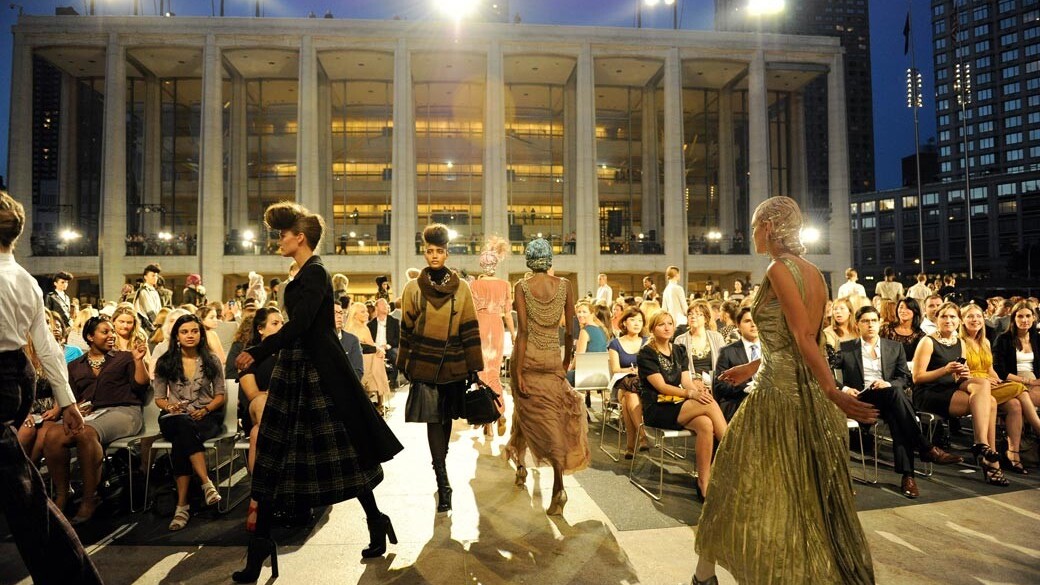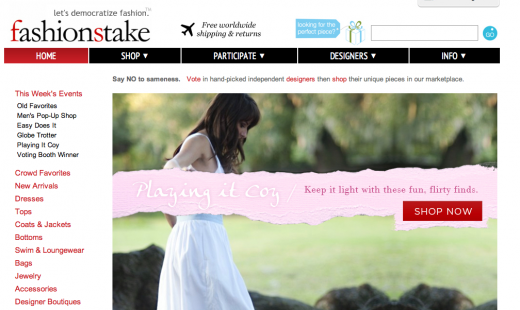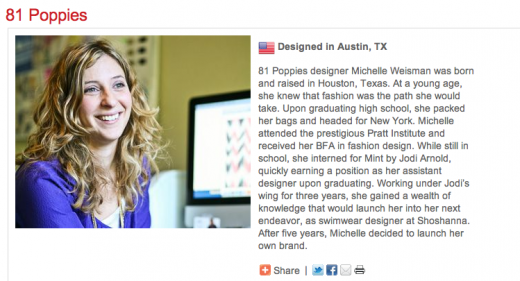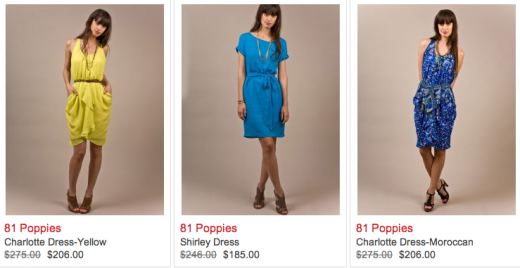
FashionStake is a New York City fashion startup based in Midtown’s Garment District. CEO Daniel Gulati and his co-founder launched the community marketplace for independent fashion in September 2010 while they were students at Harvard Business School. Since launch they’ve seen rapid growth and now have direct relationships with over 200 designers, most of whom hail from NYC.
“We’re seeing an entirely new shopping trend unfolding- a shift from e-commerce (electronic commerce) to p-commerce (participatory commerce). Essentially, it’s a huge movement towards customers contributing either through curation, design or funding to the products they eventually buy. This is a wider movement beyond traditional ‘crowdsourcing’, which in the past has been a very niche concept. We believe the new ‘P-commerce playbook’ for these websites will include elements of community engagement, user empowerment, discovery and surprise, an authentic mission, personalization, supply-side innovation & shock-and-awe usability,” says Gulati.
To discuss the new platform and the industry movement from e-commerce to p-commerce, we interviewed FashionStake founder and CEO Daniel Gulati. Find out what makes FashionStake so fashionable here:
CBM: What is FashionStake and what makes it different from other fashion startups?
Daniel Gulati: FashionStake is a marketplace for independent fashion, powered by the community. We are a place where emerging designers from around the world gather to promote their collections and a place where shoppers (also from around the world) discover exciting new looks. At the moment, we’re focusing on women’s apparel, accessories and jewelry.
There are a few things we do differently. Obviously, we don’t carry big brands and labels that are widely available. There are many places both online and offline that fill that need. We’re not a peer-to-peer marketplace either- only professional designers selling new merchandise are allowed to open boutiques on our site. These two factors together ensure our site is refreshed with new, unique looks throughout each day while still maintaining a high standard of product. Discovery is awesome but we don’t want to waste people’s time showing crappy stuff.

In addition, we aim to involve the community in curation. We do this through our Voting Booth, where our community gets to decide which designers we end up featuring in the marketplace. That’s a great way for us to work together to find the best designers and looks.
Finally, to promote discovery and overcome concerns about fit, we have a free shipping & returns policy as standard that does not vary by designer. It just makes it easier for people to shop our site and not worry about taking risks on the unknown.
CBM: Tell me about you and your co-founder and how you came up with the idea?
DG: It really came from my co-founder Vivian’s personal frustration. We met in September 2009 as students at Harvard Business School. Prior to HBS, Vivian had worked in designer fashion and saw first-hand how difficult it was for talented designers to promote their collections. It often takes them years to get any sort of traction with large retail stores, and many do not have the financial backing to stay in business that long. At the same time, consumers are crying out for new designers to shop- beyond the same old tired merchandise available in their local mall. So you have a mismatch there and an opportunity to serve. We felt a website that aggregated all these emerging designers and allowed people from around the world to shop them would be a good solution. On pretty much the first day we met, we were like ‘let’s do this’ and haven’t looked back since.
CBM: What designers are you currently working with?
DG: We have signed over 200 designers from around the world ranging from higher-profile labels like Nicholas K and Lauren Merkin to up-and-coming designers in their second season. We do have quite a large range and our designer relations team signs new designers every day.

CBM: What is this shift from e to p-commerce?
DG: We have this phrase- participatory commerce or p-commerce- to describe our belief that people want to contribute to the things they buy. That contribution can come in various forms- it might be by co-creating a product (for example, J Hilburn in men’s shirts and Quirky for consumer goods), making curation decisions by voting (Derek Lam’s recent eBay capsule collection), funding creative projects (Kickstarter) and more. While e-commerce was all about convenience and security, p-commerce is about community empowerment and discovery. It’s a broader movement that goes beyond ‘crowdsourcing’ which in the past has been quite a niche concept.
CBM: What is the P-Commerce Playbook?
DG: We’ve done some research on what makes these new commerce and marketplace businesses great and it really comes down to a few core things- engaging and empowering a well-defined community, promoting the joy of surprise and discovery, having an authentic mission, curation and personalization. If you execute that formula, you’ve got an exciting business.
CBM: How do you plan on making money?
DG: As a fee for promoting the work of our amazing independent designers, we take a small commission on product sales through FashionStake. We don’t charge listing fees or anything like that. Obviously, this makes sense for designers looking to sell their collections. But we’re starting to think of ways to add value beyond just being a marketplace in the traditional sense. For example, we’ve recently been securing national press and product placement for a group of our designers. It’s amazing exposure for them at no cost. What if we could do that more systematically?

CBM: What makes New York a perfect place to launch FashionStake?
DG: Our office is on 36th & 7th, in the middle of the Garment District. New York is THE fashion capital of the U.S. and we wanted to be located right inside the designer community. It’s just great to be able to hang out with designers and chat to them- to duck out for a coffee or grab drinks after work. It’s something that you just couldn’t do from San Francisco and I think our NY-based designers appreciate the personal touch.
CBM: What are your plans for the future?
DG: We’re signing new designers daily and growing this side of the marketplace is really important to us. With each new designer comes a new pool of fans. We’re also planning on upgrading our Voting Booth experience, making it more exciting.
In today’s innovative era, there is certainly no lack of fashion start-ups, but many come and go as the seasons. FashionStake’s business model reminds us of two startups we recently wrote about. Its network platform is similar to the London based startup, “Not Just a Label,” which we featured in our recent rundown of London’s Silicon Roundabout. Likewise, we’ve witnessed the move the crowd from e to p-commerce with NYC based fashion startup AHAlife that adds curation and social influence to sell luxury goods.
FashionStake has been named one of ELLE magazine‘s top 5 startups to watch and was included in Refinery29’s Six Best New Fashion E-commerce sites. The company is backed by Forerunner Ventures, Battery Ventures, who are also investors in Groupon and Gilt Groupe co-founder Alexis Maybank, who is also a graduate of HBS.
Read about another awesome startup that’s come out of Harvard Business School in the past year: “Meet the ladies behind Birchbox: 2 Harvard MBAs, 1 brilliant business model.”
Get the TNW newsletter
Get the most important tech news in your inbox each week.




